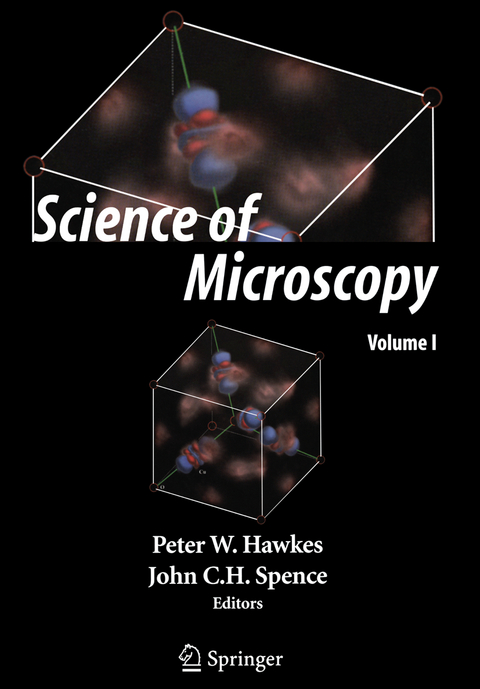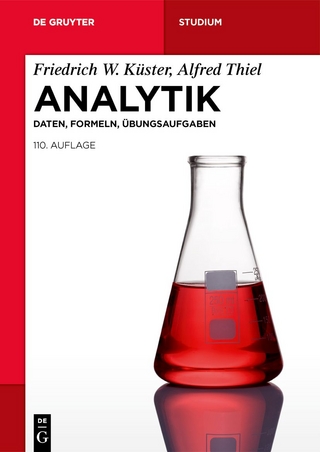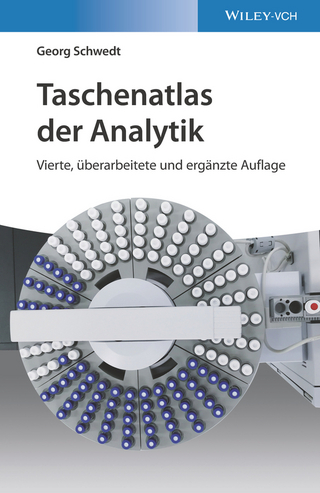
Science of Microscopy
Springer-Verlag New York Inc.
978-1-4939-3864-3 (ISBN)
Peter Hawkes received his Ph.D. in physics from the University of Cambridge in 1963, after which he continued his research on electron optics, and in particular on aberration theory and image processing, in the Cavendish Laboratory until 1975. During this period, he was a Fellow of Peterhouse and of Churchill College. He then moved to the CNRS laboratory of Electron Optics in Toulouse, of which he was Director in 1987, and published extensively on electron lens aberrations and theoretical aspects of image processing. In 2002, he was awarded the status of Emeritus CNRS Director of Research. He has been President of the French Microscopy Society and was Founder-President of the European Microscopy Society. He is author or editor of numerous books on electron optics and image processing, notably the three-volume Principles of Electron Optics (with E. Kasper). He is general editor of the series Advances in Imaging & Electron Physics and edited a special volume on the 'Beginnings of Electron Microscopy' with contributions from many of the founders of the subject. His most recent interest is the introduction of image algebra into electron optical thinking and he has published many historical articles on forgotten aspects of the subject. He has been a member of the editorial boards of Ultramicroscopy and the Journal of Microscopy for many years. He has been a member of the advisory boards of numerous European and International Congresses on Electron Microscopy and was one of the founder-organizers of the series of Congresses on Charged-particle Optics, the third of which was organized by him in Toulouse in 1990. He is a fellow of the Optical Society of America and member of EMAG (Institute of Physics), the Microscopy Society of America, the European Microscopy Society, the French Microscopy Society and the Royal Microscopical Society. In 1983, he was awarded the Silver medal of the CNRS. John Spence received his PhD in Physics from Melbourne in 1973 followed by post-doctoral work in Oxford, UK. He joined John Cowley's electron microscopy group at Arizona State University in 1977 where he is Regent's Professor of Physics. His group has worked in many areas connected with the development of novel microscopies and diffraction physics, especially quantitative convergent-beam electron diffraction and the multiple-scattering inversion problem. Instrumentation projects have included a time-of-flight spectrometer for scanning tunnelling microscopy, a point-projection field-emission microscope for molecular imaging (both with Weierstall), cathodoluminescence for scanning transmission electron microscopy (with Yamamoto), development with Tafto of the ALCHEMI method for locating foreign atoms in crystals using channeling effects on X-ray production in TEM, and development of perhaps the first direct-detection CCD camera for TEM. He was co-editor for North America of Acta Cryst. for ten years, is a Fellow of the American Physical Society, the Institute of Physics, Churchill College, and Chair of the International Union of Crystallography Commission on Electron Diffraction. He is the author of two texts (one with Zuo) on electron microscopy, and a member of the Scientific Advisory committees of the Advanced Light Source and Molecular Foundry at Lawrence Berkeley Laboratory, and of the department of energy's BESAC committee. His current interests include lensless (diffractive) imaging with electrons or X--rays, and use of laser-aligned protein beams for protein crystallography.
Imaging With Electrons.- Atomic Resolution Transmission Electron Microscopy.- Scanning Transmission Electron Microscopy.- Scanning Electron Microscopy.- Analytical Electron Microscopy.- High-Speed Electron Microscopy.- In Situ Transmission Electron Microscopy.- Cryoelectron Tomography (CET).- LEEM and SPLEEM.- Photoemission Electron Microscopy (PEEM).- Aberration Correction.- Imaging With Photons.- Two-Photon Excitation Fluorescence Microscopy.- Nanoscale Resolution in Far-Field Fluorescence Microscopy.- Principles and Applications of Zone Plate X-Ray Microscopes.- Near-Field Scanning Probes.- Scanning Probe Microscopy in Materials Science.- Scanning Tunneling Microscopy in Surface Science.- Atomic Force Microscopy in the Life Sciences.- Low-Temperature Scanning Tunneling Microscopy.- Holographic And Lensless Modes.- Electron Holography.- Diffractive (Lensless) Imaging.- The Notion of Resolution.
| Erscheinungsdatum | 23.11.2016 |
|---|---|
| Zusatzinfo | 16 Illustrations, color; LXV, 1322 p. 16 illus. in color. In 2 volumes, not available separately. |
| Verlagsort | New York |
| Sprache | englisch |
| Maße | 170 x 244 mm |
| Themenwelt | Naturwissenschaften ► Biologie |
| Naturwissenschaften ► Chemie ► Analytische Chemie | |
| Naturwissenschaften ► Physik / Astronomie ► Angewandte Physik | |
| Naturwissenschaften ► Physik / Astronomie ► Festkörperphysik | |
| Naturwissenschaften ► Physik / Astronomie ► Thermodynamik | |
| Technik ► Maschinenbau | |
| Schlagworte | Biology • Control • Electron Microscope • electron microscopy • Electrons • KLTcatalog • Life Sciences • Materials Science • Microscopy • scanning electron microscope • scanning transmission electron microscope • spectroscopy • Temperature • transmission electron micr |
| ISBN-10 | 1-4939-3864-9 / 1493938649 |
| ISBN-13 | 978-1-4939-3864-3 / 9781493938643 |
| Zustand | Neuware |
| Informationen gemäß Produktsicherheitsverordnung (GPSR) | |
| Haben Sie eine Frage zum Produkt? |
aus dem Bereich


